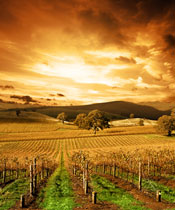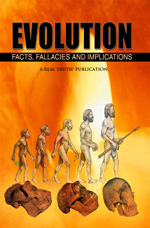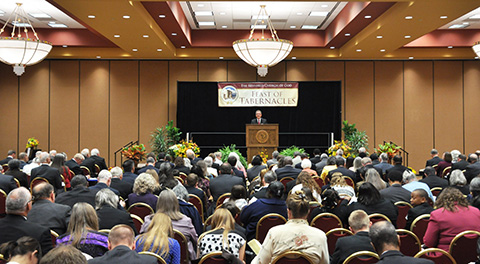Beep, Beep, Beep! I was startled awake from my slumber. It was still dark outside in a suburb just outside the city of Wollongong, Australia. The excitement of my overseas trip to the United States was dampened by the thought of international travel—15 long hours trapped in an airplane. The trip would be exhausting, but a new adventure in a foreign land awaited!
My first task upon arriving in the United States was to rent a car. After signing paperwork, an attendant gave me the keys. “It’s all ready, sir,” he said.
I strode over to the shiny new car, opened the door—and to my surprise—did not find what I was looking for. “Where’s the steering wheel?!” I thought to myself as I opened the passenger door.
Welcome to America, the land of left-side steering wheels! While navigating a vehicle on the opposite side of the road was a daunting prospect for an Australian, I casually tried to act as though I meant to open it, and then coolly strutted around to the right side—err, I mean, the left!
As I would soon discover, driving was not the only difference between my home country and the United States. I often travel to the United States on business trips and have learned that even though these two nations have their own distinct characteristics, there are many similarities as well.
Driving in America
Back to my first time in America: after driving off in my rental car, it became clear that American road networks are much bigger and more organized than in Australia. I found the North-East-South-West and sequential numbering systems helpful for navigating—if you know your bearings.

Source: Thinkstock
Because I live in the “land down-under,” which is literally on the opposite side of the globe, I would sometimes take the wrong direction, certain I was right.
My number one rule for driving in America is to always keep the middle of the road on the same side of the car as the steering wheel. This has helped me.
Of course, I did use the wipers many times instead of the blinkers, reached over the wrong shoulder into thin-air looking for the seat belt, zigzagged on unmarked back roads, and tried to get into the passenger side several times—but I survived.
Differing Systems
While driving in America became less of a challenge with practice, applying math was a different story. Converting everything from the British system of units to the metric system—especially Fahrenheit to Celsius—required constant brainpower.
The idea of changing Fahrenheit to Celsius at first seemed simple. Subtract 32 from the Fahrenheit figure, multiply by 5 and divide by 9—relatively easy, right? Not exactly!

Source: Thinkstock
In my experience, it is best to remember a few key temperatures, such as 32 degrees F = 0 degrees C (freezing), 70 F = 21 C (comfortable), and 100 F = 38 C (uncomfortable).
Other common conversions one needs to travel between Australia and America are: 1 inch = 2.54 cm, 1 meter = 3.28 feet, 1 mile = 1.6 kilometers, 1 gallon = 3.78 liters and 1 kg = 2.2 lbs.
The Internet provides easy access to conversion websites, but memorizing a few conversions is handy, as you never know when you will need to perform “international math.”
Religious Values
Another difference between the two countries that I have discovered in my travels is that Americans are noticeably more religious than Australians. According to the CIA World Fact Book, the United States is 51.3 percent Protestant, 23.9 percent Catholic, and 4 percent claim they are “none.” Australia, on the other hand, is 25.8 percent Catholic, 27.4 percent Protestant, and 18.7 percent consider themselves to be in the category of “none.”
On one occasion, while exploring the States, I was approached by someone who asked, “Do you know Jesus?” The person who started the conversation then tried to offer me a small pamphlet promoting his religious beliefs, which I politely refused.
Such encounters rarely occur in Australia. Our laid-back attitude applies to religion, which is a topic not widely discussed. Neither are there numerous billboards promoting “Christian” values or the false “Jesus.”
Both nationalities, however, do take Christ’s name in vain or use euphemisms constantly. Australia’s religious apathy is also reflected in its television programming, where swearing and sexual references are commonplace, even in primetime viewing—much worse than in the U.S.
Subtle Word Variations

Source: Thinkstock
One of the things that I find most amusing between the two countries is the way that each uses language. For example, in Australia, we often greet each other with the phrase, “G’day. How ya goin’, mate!” In the United States it is, “Hello, how are you?” Some other differences are that Australians say “boot,” where Americans say “trunk,” “petrol” instead of “gas,” “mobile phone” in place of “cellphone,” “potato gems” instead of “tater tots,” and “capsicums” for “bell peppers.”
When eating out, an “entree” is the main meal in America, rather than a starter, as in Australia. Meals are also typically larger and unclean foods are offered more frequently in the United States.
In addition, food is often fattier in America. At one restaurant, I thought I chose a healthy option by ordering a salad. The waitress asked if I would like it with chicken. I agreed only to find the chicken was deep-fried and oozing with a calorie-filled sauce!
In the United States, I noticed that most citizens are either athletic or obese, which is similar to Australians, many of whom are also overweight. National statistics indicate that 32.6 percent of adults are overweight and 16.4 percent are obese in Australia, while in the U.S., the figures are 34 percent and 33.8 percent, respectively.
Do Not Forget to Tip!
One thing you must never forget when in the United States is to leave a tip! Paying gratuity for service, especially for a meal, is common practice. Generally, most people tip between 15-20 percent, or higher for outstanding service, at a restaurant or cafe.
This is a difference between my home country and America that I had to learn the hard way.
On one trip for a university conference in Las Vegas, my mate and I (in Australia, everyone is your “mate,” except your spouse!) were both short of cash for breakfast. We ordered what we could afford and after eating we both looked at each other and said, “Oh no, the tip!” We scratched up about 75 cents between us. The waitress gave us the kind of mean look that could cut through steel, and we sheepishly tip-toed out of the restaurant, never to return!
“Born for Adversity”
Despite the many differences between Australia and the United States, there is an unseen deep bond between the people of these two nations. While Australians are more relaxed, casual, less religious, and more aware of world events, and Americans are more patriotic (plenty of flags fly in front yards) and many attend traditional churches—the commonalities they share are equally obvious.
This fact was evident when I was on the Ambassador Youth Camp staff. And every time I visit the U.S., it becomes even more obvious. Once citizens from both nations become accustomed to the “strange” way the other talks, they can easily become friends.
None of this should come as a surprise as these two nations share a common heritage. In fact, their similarities and differences can be likened to family members. Imagine two brothers. One might enjoy long-distance running, drawing and music, while the other may not particularly like any of those activities and instead prefers basketball, science and math. On paper, these two should not get along, yet they can often be seen spending time with one another. If one sibling is going through a hard time, his brother is right by his side, helping him.
A similar relationship exists between the U.S. and Australia, which often stand together at times of war. During a 1963 White House visit by Australian Prime Minister Robert Menzies, President John F. Kennedy expressed: “I think the relationship between Australia and the United States is based not so much on sentiment and not only on self-interest—although there are, of course, those factors—but I think our confidence in Australia was built during two world wars, most particularly in the days of World War II and in the days that have followed when the United States and Australia have moved in such concert together” (The American Presidency Project).
More recently, Australia supported the U.S. invasions of Afghanistan and Iraq after 2001’s September 11 attacks. These two countries exemplify Proverbs 17:17: “A friend loves at all times, and a brother is born for adversity.”
Not surprisingly, the Bible proves these nations are brothers who stand together in times of need.
National Blessings
One simple fact of history is that nations are families grown large. In God’s Word, Ishmael is the father of most Arab nations. Also, Esau’s descendants gave rise to modern nations such as Turkey.
Unknown to most, though, is from where the American and British (this includes Australian) peoples arose. What family “grew large” to become these prominent nations today? Due to many proofs throughout history and the Bible, the answer becomes clear: these two countries are descendants of the biblical patriarch Joseph.

Source: Thinkstock
To understand this, we must step back in time to when Joseph’s great-grandfather, Abraham, lived on Earth. Genesis shows that God blessed Abraham for continued obedience: “That in blessing I will bless you, and in multiplying I will multiply your seed as the stars of the heaven, and as the sand which is upon the seashore; and your seed shall possess the gate [sea gates] of his enemies; and in your seed shall all the nations of the earth be blessed; because you have obeyed My voice” (Gen. 22:17-18).
The same promise was passed to Abraham’s son Isaac and later to Jacob, the father of Joseph: “…be fruitful and multiply; a nation and a company of nations shall be of you” (Gen. 35:11).
Genesis 48 shows that Jacob conferred this promise on his grandsons Ephraim (England, Australia, Ireland, etc.) and Manasseh (the U.S.). The “nation” mentioned in Genesis 35 is the United States—the most-prosperous single nation of all time. On the other hand, the British Empire was the “company of nations,” which was the greatest empire ever and gave birth to nations such as Australia, South Africa and Canada.
Much more could be said on the incredible link between Australia and the United States, but there is not enough space here. Mr. Pack’s book America and Britain in Prophecy provides much more historical information and biblical evidence on this topic.
In the end, Australians are not that different from Americans. Sure, we talk with accents and enjoy different foods and activities, but we certainly are brother nations—and God has blessed us both abundantly.
For those living in the United States, if you ever visit “the land down under,” or the next time you meet an Australian, make sure to greet them with a hearty, “Hello.” He will probably respond with a warm smile and say, “G’day, mate!”























